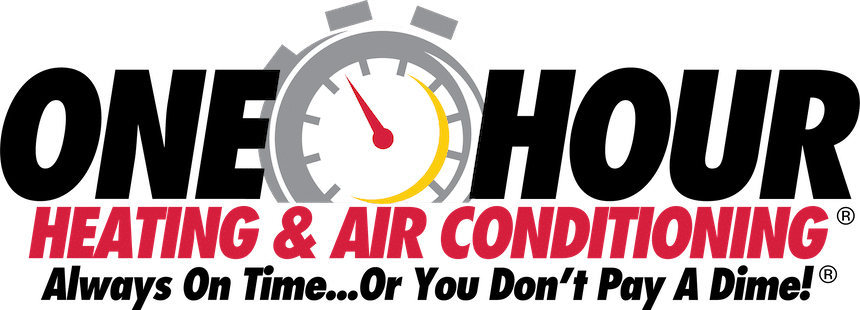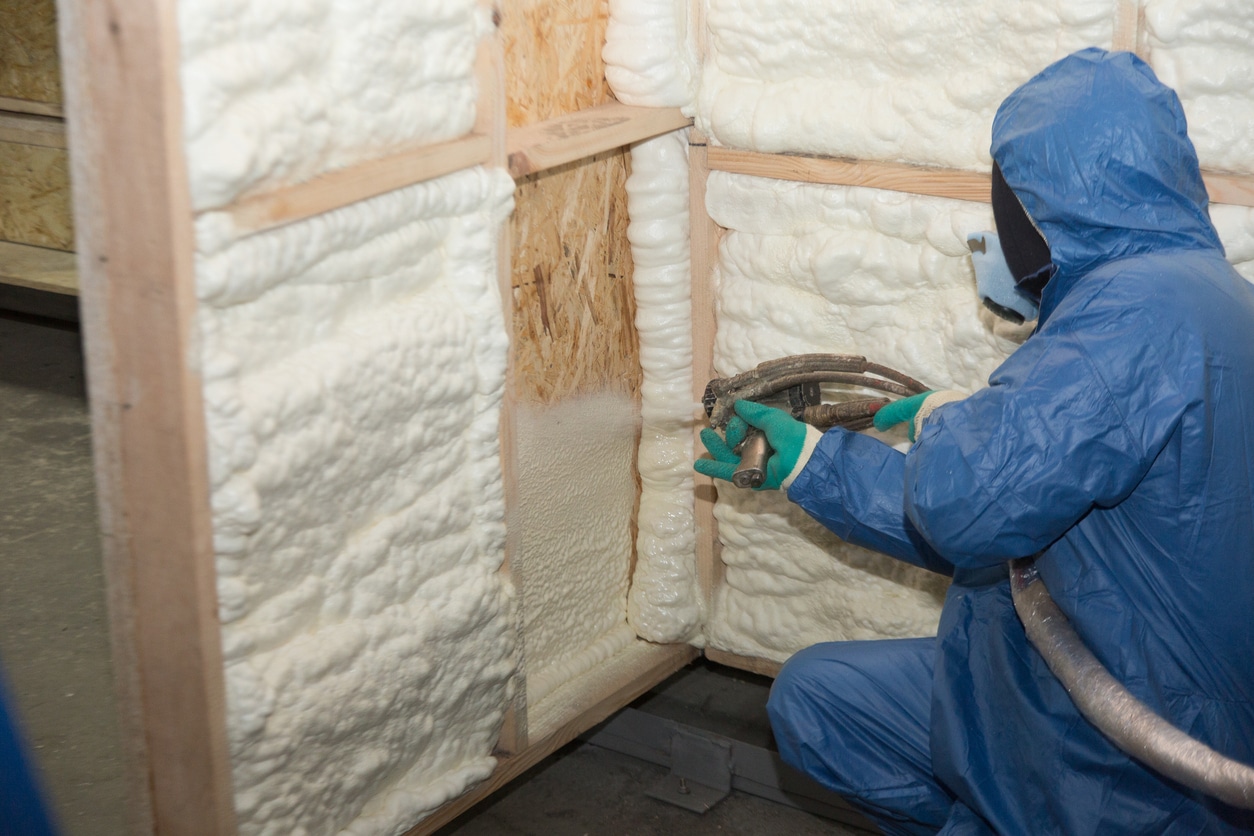- Importance of HVAC Efficiency: Improves comfort, lowers energy bills, extends system lifespan, and reduces environmental impact.
- Benefits: Enhanced comfort, reduced energy costs, improved air quality, and increased home value.
- Key Insulation Areas:
- Attic: Use fiberglass batts, blown-in cellulose, or spray foam to reduce heat loss/gain.
- Walls: Foam board or fiberglass batts to maintain consistent temperatures.
- Basement/Floor: Foam board or spray foam to prevent heat loss and moisture issues.
- Assessing Current Insulation: Conduct visual inspections, check for drafts, and consider thermal imaging to identify gaps.
- Improving Insulation: Seal air leaks, upgrade insulation materials, and maintain proper ventilation.
Are you looking to cut down on your energy bills while keeping your home comfortable year-round? HVAC efficiency is the key to achieving this goal. By optimizing your heating, ventilation, and air conditioning (HVAC) system, you can enjoy a more comfortable living environment and significant cost savings. But what exactly does HVAC efficiency entail, and why is it so important?
HVAC efficiency refers to how well your system performs while consuming the least amount of energy. An efficient HVAC system not only reduces your energy bills but also minimizes your environmental footprint. In this article, we’ll explore the importance of HVAC efficiency, the benefits of maximizing it, and how insulation plays a crucial role in enhancing your system’s performance.
Importance of HVAC Efficiency
Why should you care about HVAC efficiency? The answer is simple: it directly impacts your comfort, energy bills, and the environment. An efficient HVAC system ensures your home stays at a consistent, comfortable temperature without overworking and consuming excess energy.
Efficient HVAC systems lower your utility bills by reducing energy consumption. This means you can enjoy a cozy home without worrying about high costs. Moreover, efficient systems are less prone to breakdowns, which means fewer repair bills and a longer lifespan for your HVAC equipment.
On an environmental level, improved HVAC efficiency reduces greenhouse gas emissions. This is because energy-efficient systems use less electricity, which often comes from fossil fuels. By optimizing your HVAC system, you’re not only saving money but also contributing to a healthier planet.
Benefits of Maximizing HVAC Efficiency
Maximizing HVAC efficiency offers numerous benefits that go beyond just saving money. Here’s how enhancing your system’s efficiency can positively impact your home and lifestyle:
- Lower Energy Bills: Efficient HVAC systems use less energy to heat and cool your home, leading to significant savings on your monthly utility bills. Over time, these savings can add up, making your initial investment in efficiency upgrades well worth it.
- Enhanced Comfort: An optimized HVAC system maintains a consistent temperature throughout your home, eliminating hot or cold spots. This means you can enjoy a comfortable living environment regardless of the season.
- Longer System Lifespan: Efficient systems experience less wear and tear because they don’t have to work as hard to maintain your desired temperature. This reduces the frequency of repairs and extends the lifespan of your HVAC equipment.
- Environmental Benefits: By using less energy, efficient HVAC systems reduce your home’s carbon footprint. This is an important step in combating climate change and preserving natural resources.
- Improved Indoor Air Quality: Efficient HVAC systems often come with advanced filtration options that remove pollutants and allergens from the air. This leads to a healthier indoor environment, especially important for those with allergies or respiratory conditions.
- Increased Home Value: Homes with efficient HVAC systems and good insulation are often more attractive to potential buyers. Investing in efficiency improvements can increase your home’s market value.
Maximizing HVAC efficiency is not just about saving money; it’s about creating a more comfortable, sustainable, and valuable home.
Understanding HVAC Systems
To maximize HVAC efficiency, it’s crucial to understand how these systems work. HVAC stands for heating, ventilation, and air conditioning, and it’s responsible for maintaining indoor comfort. Here, we’ll break down the key components and their roles.
Components of HVAC Systems
- Thermostat: The control center of the HVAC system. It regulates the temperature by controlling the heating and cooling cycles.
- Furnace: The primary heating component that generates warm air or water for heating.
- Air Conditioner: The cooling unit that removes heat from the indoor air and expels it outside.
- Heat Pump: A dual-function unit that provides both heating and cooling by transferring heat between the indoors and outdoors.
- Ductwork: The network of ducts that distribute heated or cooled air throughout the home.
- Ventilation: Includes fans, vents, and air filters that ensure fresh air circulation and remove contaminants.
How HVAC Systems Work
- Heating: When the thermostat detects a temperature below the set point, it signals the furnace or heat pump to generate heat. The heated air is then distributed through the ductwork to warm the home.
- Cooling: On detecting a temperature above the set point, the thermostat triggers the air conditioner or heat pump to cool the air. The cooled air is circulated via the ductwork to reduce indoor temperature.
- Ventilation: Ventilation systems bring in fresh air from outside and expel stale indoor air. This process helps maintain indoor air quality and regulate humidity levels.
The Role of Insulation in HVAC Efficiency
Insulation plays a pivotal role in enhancing HVAC efficiency. It acts as a barrier that reduces heat loss in the winter and keeps cool air inside during the summer. Without proper insulation, your HVAC system has to work harder to maintain a consistent temperature, leading to higher energy consumption and costs. Ensuring your home is well-insulated is essential for an efficient HVAC system.
The Role of Insulation in HVAC Efficiency
Types of Insulation
Insulation is crucial for HVAC efficiency, and various types can be used depending on your home’s needs. Here are the main types:
- Fiberglass Insulation: Made from fine glass fibers, it’s commonly used in attics and walls. It’s affordable and easy to install.
- Foam Board Insulation: Rigid panels made from polystyrene or polyurethane. Ideal for basements and exterior walls due to its high insulating value.
- Spray Foam Insulation: Expands on application to fill gaps and cracks. Excellent for sealing air leaks and providing high insulation value.
How Insulation Affects HVAC Efficiency
Insulation significantly impacts HVAC efficiency by reducing the amount of energy needed to heat or cool your home. Here’s how:
- Temperature Regulation: Proper insulation keeps warm air inside during winter and cool air in during summer, reducing the workload on your HVAC system.
- Energy Savings: With better temperature control, your HVAC system operates less frequently, leading to lower energy consumption and reduced utility bills.
- Enhanced Comfort: Insulation helps maintain a consistent indoor temperature, eliminating drafts and hot or cold spots.
Insulation Options for Different Areas of the Home
Different parts of your home require specific insulation types to maximize HVAC efficiency. Here are the options for various areas:
- Attic Insulation: Critical for preventing heat loss. Fiberglass batts, blown-in cellulose, or spray foam are commonly used.
- Wall Insulation: Essential for both exterior and interior walls. Foam board and fiberglass batts are popular choices.
- Floor and Basement Insulation: Helps prevent heat loss through the ground. Rigid foam boards and spray foam are effective solutions.
By choosing the right insulation for each area, you can significantly improve your home’s energy efficiency and comfort.
Attic Insulation
Proper attic insulation is essential for maintaining HVAC efficiency. Since heat rises, a poorly insulated attic can lead to significant heat loss in winter and excessive heat gain in summer. Here’s how you can effectively insulate your attic:
Types of Attic Insulation
- Fiberglass Batts: These are pre-cut panels of fiberglass insulation. They are easy to install and effective at reducing heat loss. However, they need to be installed carefully to avoid gaps.
- Blown-In Cellulose: Made from recycled paper treated for fire resistance, this type of insulation is blown into the attic, filling gaps and covering irregularly shaped areas better than batts.
- Spray Foam: This insulation expands upon application, sealing gaps and cracks. It provides an excellent air barrier and high insulation value but is more expensive than other options.
Steps to Insulate Your Attic
- Inspect and Prepare: Check for any air leaks, moisture issues, or structural problems. Seal gaps around pipes, chimneys, and other openings using caulk or spray foam.
- Install Insulation: Lay fiberglass batts between joists, ensuring they fit snugly without compressing. For blown-in insulation, use a blower to evenly distribute the material. Spray foam should be applied by a professional due to its complexity.
- Ensure Adequate Ventilation: Proper ventilation prevents moisture buildup, which can damage insulation and reduce its effectiveness. Ensure your attic has sufficient vents to allow air circulation.
- Add a Vapor Barrier: In some climates, adding a vapor barrier can help prevent moisture from entering the insulation. This barrier should be placed on the warm side of the insulation.
Benefits of Attic Insulation
- Energy Savings: By reducing heat loss and gain, attic insulation can lower your energy bills significantly.
- Improved Comfort: A well-insulated attic helps maintain a consistent indoor temperature, enhancing overall comfort.
- Extended HVAC Lifespan: With less strain on your HVAC system, insulation can help extend its lifespan and reduce maintenance costs.
By properly insulating your attic, you can achieve significant improvements in HVAC efficiency and home comfort.
Wall Insulation
Insulating your walls is a vital step towards enhancing HVAC efficiency. Proper wall insulation helps maintain a consistent indoor temperature, reducing the need for your HVAC system to work overtime. Here’s what you need to know about wall insulation:
Types of Wall Insulation
- Fiberglass Batts: Commonly used for wall insulation, these are easy to install between wall studs. They offer good thermal resistance but need to be installed carefully to avoid gaps.
- Foam Board: These rigid panels provide high insulation value and can be used on both exterior and interior walls. Foam board is particularly effective for insulating basements and crawl spaces.
- Spray Foam: Expands to fill cavities, creating an air-tight seal. It provides excellent insulation and air sealing but is more expensive and typically requires professional installation.
How to Insulate Your Walls
- Assess Current Insulation: Before adding insulation, check the current state of your walls. You might need to remove old, ineffective insulation or repair any damage to the walls.
- Choose the Right Insulation: Select the type of insulation that best suits your needs and the specific areas of your home. Consider factors such as climate, budget, and ease of installation.
- Install Insulation: For fiberglass batts, cut the insulation to fit snugly between the studs. Ensure there are no gaps or compressions. Foam boards should be cut to size and securely attached to the wall surface. Spray foam should be applied evenly to fill all cavities.
- Seal Air Leaks: Use caulk or weatherstripping around windows, doors, and other openings to prevent air leakage. This step is crucial for maximizing the effectiveness of your wall insulation.
Benefits of Wall Insulation
- Energy Efficiency: Proper wall insulation significantly reduces heat transfer, leading to lower energy bills and less strain on your HVAC system.
- Comfort: Well-insulated walls help maintain a stable indoor temperature, reducing drafts and cold spots.
- Noise Reduction: Insulation also acts as a sound barrier, reducing noise from outside and between rooms.
- Moisture Control: Insulating your walls can help control moisture, preventing mold growth and structural damage.
By ensuring your walls are well-insulated, you enhance your home’s energy efficiency and create a more comfortable living environment.
Floor and Basement Insulation
Proper insulation in floors and basements is crucial for overall HVAC efficiency. These areas are often overlooked, yet they can significantly impact your home’s energy performance. Here’s how to effectively insulate your floors and basement:
Types of Floor and Basement Insulation
- Fiberglass Batts: Suitable for between floor joists. They are easy to install and provide good thermal resistance. Ideal for unfinished basements and crawl spaces.
- Foam Board: Rigid insulation panels that provide excellent insulating value. Great for insulating basement walls and floors.
- Spray Foam: Expands to fill gaps and cracks, providing an airtight seal. Excellent for hard-to-reach areas and creating a moisture barrier.
Steps to Insulate Your Floors and Basement
- Inspect and Prepare: Check for moisture issues, cracks, or gaps in the basement. Seal any gaps with caulk or spray foam to prevent air leakage and moisture ingress.
- Install Insulation: For floor insulation, place fiberglass batts between the floor joists, ensuring they fit snugly without compressing. For basement walls, attach foam boards directly to the wall surface, ensuring a tight fit. Spray foam should be applied evenly to cover all areas.
- Add a Vapor Barrier: In basements, consider adding a vapor barrier to prevent moisture from reaching the insulation. This barrier should be placed on the warm side of the insulation.
- Ensure Proper Ventilation: Adequate ventilation is crucial to prevent moisture buildup, which can damage insulation and reduce its effectiveness.
Benefits of Floor and Basement Insulation
- Energy Savings: Insulating floors and basements reduces heat loss, leading to lower energy consumption and utility bills.
- Improved Comfort: Proper insulation eliminates cold floors and drafts, enhancing overall home comfort.
- Moisture Control: Insulation helps control moisture levels, preventing mold growth and structural damage in basements.
- Increased Home Value: Well-insulated homes are more energy-efficient and attractive to potential buyers, increasing the property’s market value.
By insulating your floors and basement, you can significantly enhance your home’s HVAC efficiency, leading to a more comfortable and energy-efficient living space.
Choosing the Right Insulation Material
Selecting the appropriate insulation material is critical for maximizing HVAC efficiency. Each material has its benefits and is suited to different areas and purposes. Here’s a detailed look at the most common insulation materials:
Fiberglass Insulation
- Overview: Made from fine glass fibers, fiberglass insulation is available in batts, rolls, and loose-fill forms. It’s widely used due to its affordability and effectiveness.
- Benefits:
- Cost-Effective: One of the most affordable insulation options.
- Easy Installation: Can be installed by homeowners with basic DIY skills.
- Fire Resistant: Non-combustible and resists fire.
- Best Uses: Attics, walls, floors, and basements.
Foam Board Insulation
- Overview: Rigid panels made from polystyrene, polyisocyanurate, or polyurethane. Foam boards provide excellent thermal resistance and are suitable for various applications.
- Benefits:
- High R-Value: Provides a high insulation value per inch of thickness.
- Moisture Resistance: Excellent for areas prone to moisture.
- Durability: Long-lasting and resistant to degradation.
- Best Uses: Basement walls, floors, and exterior walls.
Spray Foam Insulation
- Overview: Expanding foam sprayed into place, it fills gaps and creates an airtight seal. Spray foam is available in open-cell and closed-cell forms.
- Benefits:
- Air Sealing: Creates a superior air barrier, preventing leaks.
- High R-Value: Provides excellent insulation value.
- Moisture Barrier: Closed-cell spray foam acts as a moisture barrier, preventing mold growth.
- Best Uses: Hard-to-reach areas, around ducts, and in gaps and cracks.
By understanding the unique properties and benefits of each insulation material, you can make an informed decision that best suits your home’s needs and enhances HVAC efficiency.
Assessing Your Home’s Current Insulation
Before improving your home’s HVAC efficiency, it’s crucial to assess your current insulation. Knowing where and how well your home is insulated can help identify areas for improvement. Here’s how to conduct a thorough insulation assessment:
How to Inspect Insulation
- Visual Inspection: Begin by checking accessible areas like the attic, basement, and crawl spaces. Look for visible insulation and note its condition. Insulation that is thin, compressed, or damaged may need replacing.
- Check Walls: To inspect wall insulation, remove electrical outlet covers and use a flashlight to peek inside. Alternatively, you can drill a small hole in an inconspicuous area and use a boroscope to look inside the wall.
- Measure Insulation Depth: Use a ruler or tape measure to check the depth of attic and basement insulation. Compare your findings to the recommended insulation levels for your region.
Identifying Insulation Gaps
- Draft Detection: Walk around your home on a windy day and feel for drafts around windows, doors, and electrical outlets. Drafts indicate air leaks and inadequate insulation.
- Thermal Imaging: Use a thermal imaging camera to identify cold spots and heat loss. This tool can reveal areas where insulation is missing or insufficient.
- Energy Audit: Consider hiring a professional energy auditor to conduct a comprehensive assessment of your home’s insulation. They can provide detailed reports and recommendations for improvement.
Steps to Improve Insulation
- Seal Air Leaks: Use caulk or weatherstripping to seal gaps around windows, doors, and other openings. This step is essential for improving insulation effectiveness.
- Add Insulation: Based on your assessment, add insulation to areas that need improvement. This might include attics, walls, floors, and basements.
- Upgrade Existing Insulation: Replace old or damaged insulation with newer, more efficient materials. Consider upgrading to higher R-value insulation for better performance.
- Maintain Ventilation: Ensure your home has adequate ventilation to prevent moisture buildup, which can damage insulation and reduce its effectiveness.
By thoroughly assessing your home’s current insulation and identifying areas for improvement, you can take steps to enhance HVAC efficiency and enjoy a more comfortable, energy-efficient home.

FAQs
- How often should insulation be inspected?
Insulation should be inspected every few years to ensure it remains effective. It’s also wise to check insulation after severe weather events or if you notice changes in your home’s comfort levels or energy bills.
- What are the signs of poor insulation?
Signs of poor insulation include fluctuating indoor temperatures, drafts, high energy bills, and cold or hot spots in different rooms. Additionally, if you see pests or moisture damage, your insulation may be compromised.
- How does insulation impact indoor air quality?
Proper insulation helps maintain indoor air quality by reducing drafts and preventing outside pollutants from entering your home. It also helps control moisture levels, reducing the risk of mold and mildew growth.
- What is the best insulation material for my home?
The best insulation material depends on your specific needs, budget, and the area being insulated. Fiberglass batts are versatile and affordable, foam boards offer high R-value, and spray foam provides excellent air sealing. Consulting with a professional can help you choose the right material.
- How can I ensure my HVAC system runs efficiently year-round?
To ensure year-round efficiency, regularly inspect and replace air filters, schedule annual maintenance checks, seal air leaks, and ensure your home is well-insulated. Additionally, consider upgrading to a programmable thermostat to better control heating and cooling.











